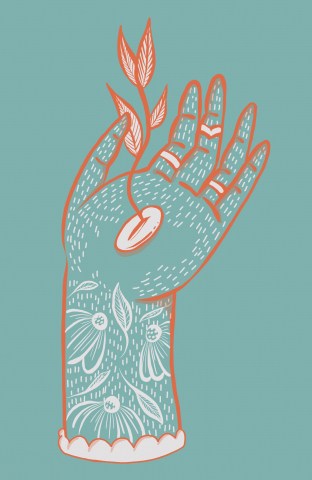In the male-dominated field of physical labour, treeplanting companies in Canada are beginning to offer greater gender parity. Some treeplanting camps will hire women for up to half of their workforce, and Silviculture Canada estimates that 30 per cent of tree planters in Canada are female.
Tree planting is a response to public concerns regarding the environmentally devastating number of trees being clearcut all over Canada by logging companies.
Reforestation companies hire individual tree planters as independent contractors. Tree planters are paid by the amount of trees planted — last year, I earned between $0.11 to $0.17 per tree. There are many companies throughout Canada specializing in different types of planting, mostly concentrated in British Columbia.
In my first season as a planter, knowing that there was room for women in this industry gave me some hope. I began in May, 2017, while struggling with mental illness — which had put me in a very dark place.
In the weeks leading up to my departure from civilization, countless strangers, acquaintances, family and friends — all people who had never planted themselves — would say to me, “You know that’s really hard, right?”
Though they didn’t call me weak outright, I took the hint.
I’m small. I was one of the shortest people in our camp at 5-4. I’m athletic, but at the time, I was a bit out of shape. I had never done physical labour, and I doubted myself more than anyone else. I wasn’t sure I could do it, but in the end, I killed it.
Knowing that so many people had doubted my ability made it feel so much more rewarding to finish the twoand- a-half-month season with flying colours. Days where I made $300 by planting over 3,000 trees were a nice big “fuck you and respect me” to all of them. I left my first season as a tree planter feeling stronger, healthier and more confident.
One of the things that got me through the season was being surrounded by many badass women. Some were students, working to finance their studies, and some were full-time planters.
Often, women actually rival men in tree-planting skill. My size and strength weren’t as relevant to the work as I’d expected. There is no ideal body type for a planter, because there are many different styles of planting. It’s an individualized skill, and each planter has their own technique.

Endurance is more important than strength in tree planting, as you are doing a repetitive activity non-stop. According to John Betts, the executive director of the Western Silvicultural Contractors’ Association, this is why women can be so successful — they are more likely to have high endurance.
Alani Caruso, about to begin her ninth season this March, plants for six months of the year. Caruso has experienced first-hand the nuances that come with existing as a woman in a male-dominated space like tree-planting camps. One specific nuance is the gender-based prejudice held by some of her foremen and co-workers.
“I have experienced certain attitudes or reactions, because I haven’t always been considered, perhaps, worthy or skilled or ‘tough’ enough for this job based on assumptions of my person as a woman. I don’t want to be treated differe
ntly based on false gender constructs,” Caruso said.
Women can also face sexual harassment from other planters living in the same camp. However, gender-based inequity and violence are not prevalent in all tree-planting companies.
At Northern Reforestation, four of the five foremen I worked under were women. There is also an anti-harassment committee with elected women whom we could talk to about concerns. Additionally, in one of our camp meetings, consent was discussed and explained — especially in relation to alcohol.
There are huge strides being made in the industry, and hopefully, we will begin to see more of this gender parity in other companies and throughout the field of physical labour as a whole.
—
Jaden Pierce
Graphic: Lesia Karalash / Graphics Editor